5 Common Mistakes People Make with Medical Waste
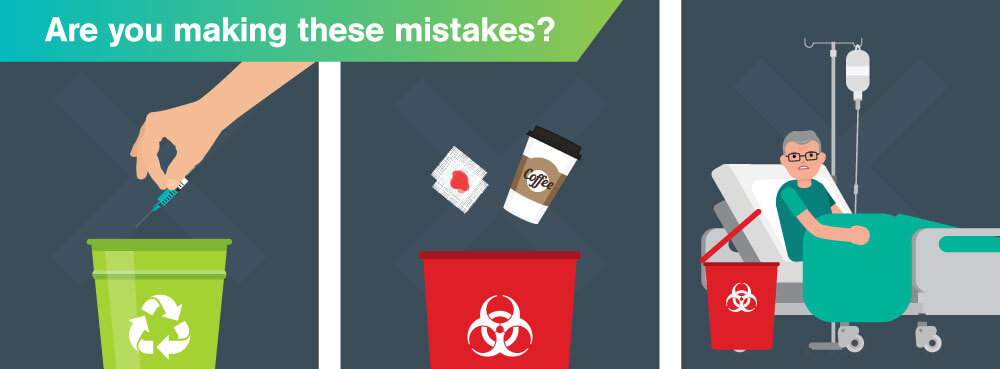
While a huge focus of proper medical waste disposal processes emphasizes environmental protection, it’s vital to remember that it also enhances safety for healthcare providers and the public. So, what are some common mistakes that are made, and how can they be avoided?
TOPICS WE WILL COVER:
3 / Mixing medical waste streams
4 / Safety issues with pharmaceutical disposal
5 / Open biohazard containers within a patient environment
7 / Consequences of common mistakes
8 / Daniels Health promotes knowledge
Mistakes Happen
The scenarios for mistakes are endless. A busy nurse allows a sharps container to get past the fill line. A housekeeper gathers the soiled bedding of an infectious patient in her arms without using gloves or mask. A doctor overwhelmed with a steady stream of patients tosses a syringe of dispensed vaccine into a trashcan because the sharps container is full. The janitor tosses a single red biohazard bag into the “regular” trash bin and it soon disappears under other trash bags.
What can go wrong? One syringe in the trashcan won’t matter, will it? One small red biohazard bag in a huge waste bin of non-hazardous waste isn’t that big of a deal, is it?
Mistakes people make with medical waste, whether in a hospital, a physician’s office, a veterinary examination room, or a cancer treatment center can lead to dire consequences. Careless medical waste disposal of any kind incurs increased risk of injury, contamination, or exposure to harmful components, toxins, and drugs.
Common mistake: Improper sharps disposal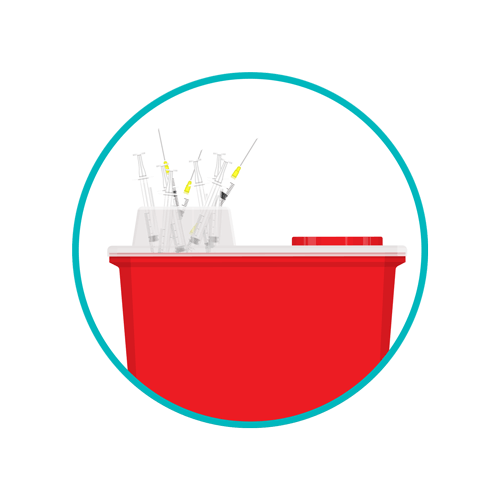
What can go wrong with improper sharps disposal? According to the National Institute for Occupational Safety and Health (NIOSH) a needlestick injury can lead to very serious infections caused by bloodborne pathogens like HIV, hepatitis B, and hepatitis C. The Centers for Disease Control and Prevention (CDC) estimate that approximately 50% of sharp object or needlestick injuries occur during their use, while just over 10% occur after use but prior to disposal. Leaving sharps on a patient’s bedside table, bed, or dropped on the floor – even for a moment – is an accident waiting to happen.
Federal guidelines stipulate how sharps containers are to be positioned in patient rooms or care facilities to prevent spillage. Sharps containers should always be placed where they are out of reach of children and must be compliant with federal guidelines. What does that mean? Sharps containers are to be leak-proof, puncture resistant, sealable, and either color-coded or labeled appropriately for disposal.
Common mistake: Mixing medical waste streams
Federal as well as state guidelines define the differences between medical waste streams in healthcare scenarios, and it’s important to understand the specific regulations relevant to your facility. One example: you should not mix any hazardous waste with non-hazardous waste. Not only does that make all that waste hazardous due to contamination, but it increases treatment and disposal costs as a result. Every waste stream must be treated and handled separately. The same applies to disposal methods for different types of waste. Standards for such systems are clear in both federal and state guidelines.
Additionally, the federal government mandates that containers be properly labeled for easier and safer identification of its components and applicable treatment and disposal methods.
Inadequate labeling or signage can prove dangerous. Failure to post signage in restricted areas that store hazardous waste containers, for example, can put not only healthcare staff at an increased and serious risk, but can lead to accidents with disastrous results.
Common mistake: Safety issues with pharmaceuticals disposal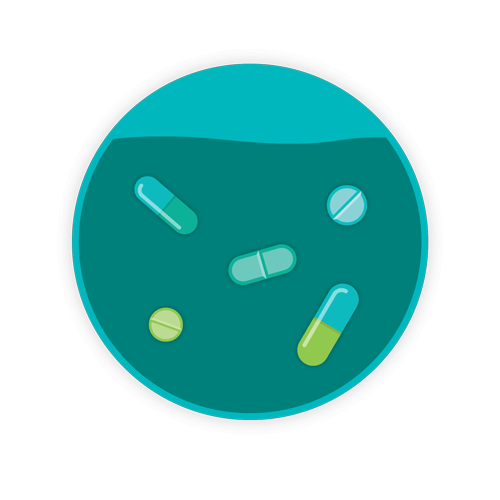
Healthcare workers handle hazardous pharmaceuticals regularly. Some pharmaceuticals, such as those used to treat cancer (antineoplastic drugs) are extremely toxic. Some can increase the risk of ignitability (a fire hazard), while others are corrosive in nature. Radioactive compounds, which can be found in some chemotherapy drugs, are also dangerous if not handled properly.
Improper disposal of hazardous pharmaceuticals can contribute to environmental damage. Further, unprotected contact with its components by a patient, housekeeper, a janitor, or waste transport service workers can be dangers. Some pharmaceuticals are not only hazardous, but toxic in nature.
Improper identification of pharmaceuticals is not just a safety hazard. There are potential legal issues at play when dealing with any controlled substances that are regulated by the US Drug Enforcement Administration.
Common mistake: Open biohazard containers within a patient environment
In some cases, not only in hospitals but in private practice physicians’ offices, collection of biohazardous waste and its disposal is not always up to par. Neglecting to obtain an adequate number of red biohazard containers for each examination room can promote improper waste disposal as well as exposure to blood and blood pathogens that endangers healthcare providers and their patients.
Use of containers to store biohazard materials that are not red or not clearly marked with the universal biohazard symbol can also harm waste management pickup and shipment services, especially when they don’t comply with DOT hazardous materials regulations for ground transport.
Common mistake: Poor training standards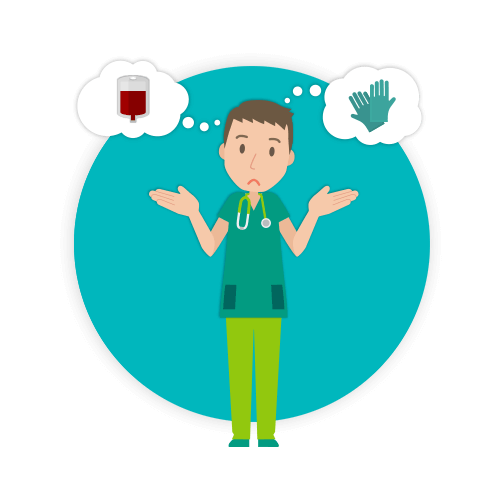
Inadequate training standards for all personnel in a healthcare environment can contribute to accidents or injury from medical waste. It is essential that all personnel in medical environments be trained in the identification and determination of hazardous and non-hazardous waste and how each is to be handled to promote safety.
State and federal guidelines are to be followed to maintain compliance, so it’s important to stay up to date with changing regulations in regard to collection, storage, packaging, labeling, and disposal. Failure to maintain compliance when it comes to medical waste containers is not only a health issue for the community, but an environmental issue as well.
Consequences of common mistakes
Beyond the obvious issues of safety, local, state, and federal fines and penalties rendered due to improper medical waste disposal of any kind can cost up to tens of thousands of dollars a day. Compliance is key. Avoiding medical waste violations is essential to avoid fines as well as to safeguard reputation.
Fines assessed for non-compliant regulated medical waste regulations can range anywhere from $30,000 per violation to $100,000. The Occupational Safety and Health Administration (OSHA) can impose fines that range from $7,000 to $70,000 for serious and willful violations of standards in regard to improper collection, storage, or disposal of bloodborne pathogens. The EPA can assess $10,000 to $25,000 per day, per violation, for improper pharmaceutical waste disposal. If you’re found non-compliant with the Toxic Substances Control Act, you can be fined approximately $40,000 per violation, per day.
Don’t let this happen to you. Don’t make common mistakes when it comes to medical waste. Know the rules, teach the rules, and enforce the rules.
Daniels Health promotes knowledge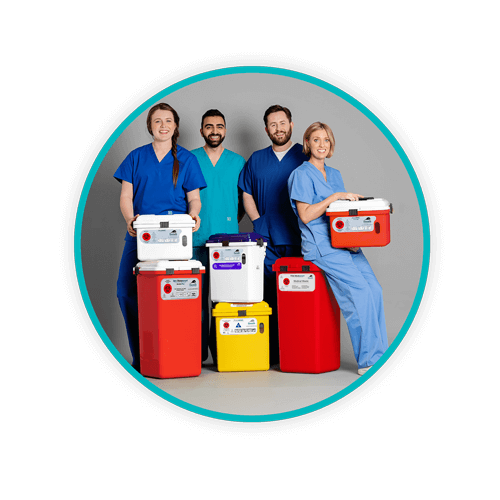
Knowledge regarding safe and compliant medical waste collection and disposal processes are essential for safety. With over three decades of experience in the field of healthcare waste management, Daniels Health provides products, education, resources, and customizable services for healthcare providers large and small. For more information about Daniels Health and what we do, contact us today.
Let's Talk!
Your time is valuable, and we don’t want to play hard to get. You can either phone us directly on the details listed on our contact page, or feel free to fill out this short form and one of our team members will get back to you as quickly as possible.
